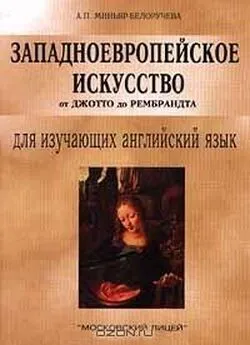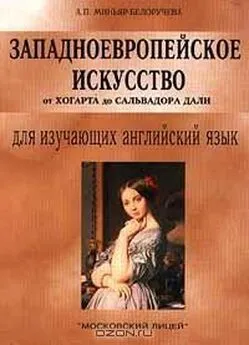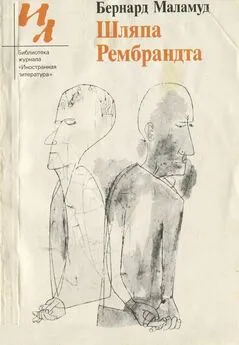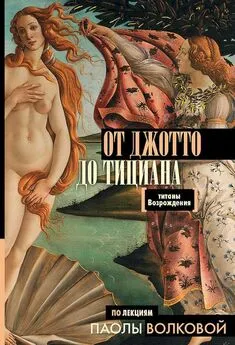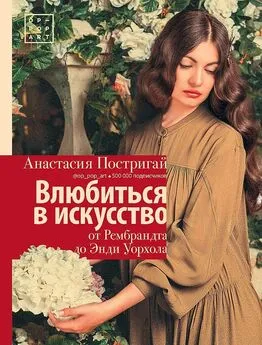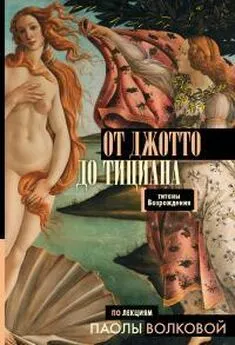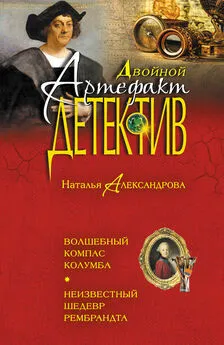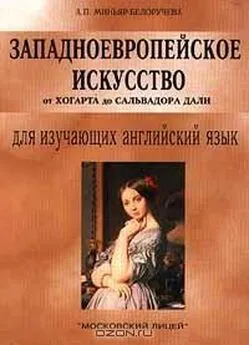А. Миньяр-Белоручева - Западноевропейское искусство от Джотто до Рембрандта
- Название:Западноевропейское искусство от Джотто до Рембрандта
- Автор:
- Жанр:
- Издательство:«Московский Лицей»
- Год:1999
- Город:Москва
- ISBN:5-7611-0181-5
- Рейтинг:
- Избранное:Добавить в избранное
-
Отзывы:
-
Ваша оценка:
А. Миньяр-Белоручева - Западноевропейское искусство от Джотто до Рембрандта краткое содержание
Тексты настоящего пособия охватывают пять веков западноевропейской живописи от Джотто до Рембрандта. Это дает возможность обучаемым приобрести не только лингвистические знания, усвоив обширный лексический материал, но и культурологические, поскольку последовательный хронологический переход текстов от одного художника к другому позволяет создать более или менее целостную картину развития западноевропейской искусства с XIII по XVII вв. Система упражнений направлена на усвоение лексического материала и развитие навыков устной речи.
Данная книга является первой частью цикла учебных пособий для изучающих английский язык и предназначена для студентов-искусствоведов, учащихся классических гимназий, лицеистов и всех интересующихся искусством.
Учебный центр «Московский Лицей»
пособие для изучающих английский язык
издание второе переработанное и дополненное
Москва -1999
Рецензенты:
И. И. Малинина кандидат филологических наук
Н. В. Васютина кандидат филологических наук
РЕКОМЕНДОВАНО кафедрой иностранных языков исторического факультета МГУ им. М. В. Ломоносова
Западноевропейское искусство от Джотто до Рембрандта - читать онлайн бесплатно полную версию (весь текст целиком)
Интервал:
Закладка:
Marriage of the Virgin – «Обручение Марии»
Madonna of the Meadows – «Мадонна в зелени»
Disputa (Disputation over the Sacrament) – «Богословие» или «Диспута»
Schools of Athens - «Афинская школа»
Sistine Madonna – «Сикстинская Мадонна»
Transfiguration of Christ – «Преображение»
Pope Leo X with Cardinals Giulio de'Medici and Luigi de'Rossi – «Портрет папы Льва X с кардиналом Джулиано де Медичи и Луиджи де Росси»
Stanza della Segnatura – Станца делла Сеньятура «зал Подписи»
Eucharist – евхаристия, святое причастие
The Vatican – Ватикан
Good Friday – Великая пятница, пятница на страстной
неделе
I. Read the text. Mark the following statements true or false
1. In Raphael's art the High Renaissance ideal of harmony comes to its most complete expression.
2. In 1505 in Rome Raphael achieved immediate success.
3. The Sistine Madonna recalls the Madonna of the Rocks .
4. Raphael, invited by Sixtus iv to paint the Stanza of the Vatican, retained the position as court painter until his death.
5. Raphael came to the threshold of the Baroque.
6. The 20-th century painters turned to Raphael as the messiah.
II. How well have you read? Can you answer the following questions?
1. Whose styles did Raphael absorb?
2. What did Raphael paint in 1504? What is depicted in this picture?
3. What was Raphael fond of painting during his three-year stay in Florence? Which one was the loveliest? How did Raphael group the figures?
4. What was the first room frescoed by Raphael? What frescoes is it possible to single out from the complex iconographic programme? What do these frescoes represent? What brought Raphael to the threshold of the Baroque style?
5. What painting represents the pinnacle of Raphael's achievements? How are the Virgin and the Child depicted? What do the saints symbolize?
6. Whose portrait did Raphael paint in 1517? What year was it? How did Raphael portray the sitter? What did he want to show?
7. What was Raphael's greatest painting? What was its subject? Was it a traditional rendering of the subject? What is the lower section composed of? What is the upper loop composed of? What did Raphael embody in this vision? Where was this painting placed?
8. What was Raphael's death to his contemporaries? What does a closer look at the short-lived High Renaissance show?
III. I. Give Russian equivalents of the following phrases
the pinnacle of the achievements; messiah of the art; to put a personal stamp on; succeeding centuries; to abandon the static harmony for dynamic compositions; a threshold of the Baroque; to endow the subject with; Good Friday; to commemorate the death of; to pass into history; patron saint of the hour of death; the fateful year; an unsparing portrait; the traditional rendering of the subject; a synthesis of Classical antiquity and Christian spirituality; an unstable equilibrium; to inspire artists in every century; the ultimate in the High Renaissance vision.
II. Give English equivalents of the following phrases:
духовный опыт; воплотить свои верования; вершинь живописных работ Высокого Ренессанса; шаткое равновесие, вдохновлять художников; Великая Пятница; традиционное изображение темы; наделить образы; судьбоносный год; почтить память; покровительница смертного часа; отказаться от статики гармонии ради динамики композиции; мессия искусства; работать над фресками; оставить печать на; объединить вокруг; беспощадный портрет; на пороге Барокко; вдохновлять художников последующих веков; синтез христианской духовности и классической античности.
III. Make up sentences of your own with the given phrases.
IV. Arrange the following in the pairs of synonyms:
a) to dissolve; to embody; beliefs; to endow; to distinguish; spiritual; profound; fateful; luminous; to abandon;
b) to bestow; deep; momentous; bright; to desert; to vanish; to manifest; doctrines; to characterise; airy.
IV. Insert the missing prepositions. Translate the text. Retell the text.
The «School… Athens» presents… an ideal architecture the chief philosophers… all periods… Greek antiquity engaged… learned argument. The figures form a circle… depth… the lofty structure, culminating… the central arch, where… the distant sky Plato, holding the «Timaeus» points… Heaven as the source… ideas… which the early forms originate, while Aristotle, holding his Ethics, indicates earth u;. the object… all observations… the upper left Socrates discusses philosophical principles… the youths… Athens… the lower left Pythagoras delineates his proportion system… a slate… pupils… the right Euclid uses another slate to demonstrate a geometric theorem.
V. Insert the article wherever necessary. Translate the text. Retell the text.
… «Disputa» begins in… Heaven. God… Father presides over… familiar Deesis with Christ enthroned, displaying his… wounds. On either side, in… floating semicircle of… cloud,… Apostles and… saints from… New Testament alternate with… prophets and… patriarchs from… Old Testament… Below…
throne of Christ,… Dove of… Holy Spirit, flanked by… child angels, with four open gospels, flies downward toward… Host. They are displayed on… altar. On either side of… alter sit… Four Fathers of… Church and… groups of… theologians from all ages of… Christianity engaged in… argumentation over… nature of… Eucharist. Among… recognizable portraits are those of… Dante, and to… left of… door, and in front of him,… Sixtus IV. Every figure is based on Raphael's fundamental spiritual principle.
VI. Here are descriptions of some of Raphael's works of art. Match them up to the given titles.
1. The painting is an encyclopaedic presentation of the philosophers of pagan antiquity.
2. The central group is unified around the motive of Joseph putting the ring on Mary's finger.
3. Raphael has shown the sitter as he was in an unsparing portrait.
4. The Virgin, showing the Child walks toward us on the luminous clouds.
5. This is the most complete expression of the doctrine of the Eucharist in Christian art.
6. In contrast to the traditional rendering of the subject, Raphael painted an accompanying incident as well.
7. The Virgin seats before a deep landscape.
a. Sistine Madonna
b. School ofAthens
c. Madonna of the Meadows
d. Transfiguration of Christ
e. Pope Leo X with Cardinals Giulio de 'Medici and Luigi de'Rossi
f. Marriage of the Virgin
g. Disputa(Disputation over the Sacrament)
VII. Translate the text into English.
Идеалы Высокого Возрождения наиболее полно воплотились в произведениях Рафаэля. Всем своим творчеством художник подчеркивал красоту и гармонию человека. Рафаэль создал возвышенный образ совершенного человека, находящегося в гармонии с окружающим миром.
В 1504 г. Рафаэль приехал во Флоренцию, где работали тогда два великих его современника — Леонардо да Винчи и Микеланджело. Многое почерпнув у них, Рафаэль создал замечательные изображения «Мадонн» и портреты. Портреты «Папы Юлиана II» и «Льва X» считаются наилучшими.
В 1508 г. папа Юлий II поручил Рафаэлю роспись станц – личных папских покоев в Ватикане. В 1509 художник приступил к работе в «Станце печати», роспись которой состоит из четырех фресок. Это – «Богословие» (спор отцов церкви о причастии), «Поэзия» (изображает величайших поэтов классической древности и итальянского Возрождения), «Правосудие» (фреска представляет основоположников светского и церковного законодательства) и «Афинская школа» (собрание философов и ученых античности). Росписи в станцах являются одной из высочайших вершин искусства Высокою Возрождения.
«Сикстинская Мадонна» — одно из самых вдохновенных произведений художника. В этой картине сочетается жизненная правдивость образа с чертами идеального совершенства.
В последние годы жизни Рафаэль помимо живописи занимался также архитектурой, в которой проявил себя как один из крупнейших мастеров своего времени.
VIII. Summarize the text.
IX. Topics for discussion
1. Raphael as the artist of the High Renaissance ideal of harmony.
2. Raphael's frescoes.
3. The High Renaissance heritage.
Unit VIII Titian (1490-1576)
The monarch of the Venetian School in the sixteenth century was Titian. A robust mountaineer came to Venice as a boy from the Alpine town of Pieve di Cadore and lived well into his nineties. The young painter was trained in the studios of both Gentille Bellini and Giovanni BellinI. Then he assisted Giorgione with the lost frescoes that once decorated the exteriors of Venetian palaces.
Once independent, Titian succeeded in establishing colour as the major determinant. Although he visited central Italy only in 1545-46, Titian was aware, probably, by means of engravings, of what was going on in Florence and Rome and assimilated High Renaissance innovations to his own stylistic aims. Titian generally began with a red ground, which communicated warmth to his colouring; over that he painted figures and background often in brilliant hues.
Titian's life was marked by honours and material rewards. He made himself wealthy. His palace in Venice was the centre of a near-princely court, fulfilling the worldly ideal of the painter's standing as formulated by Leonardo da VincI. In 1553 Titian began his acquaintance with the Emperor Charles V. There is a legend that the Emperor, on a visit to Titian's studio, stooped to pick up a brush the painter had dropped. Titian was called twice to the imperial court.
An early work, painted by Titian about 1515, is known as Sacred and Profane Love . The subject of this enigmatic picture has never been satisfactorily explained. Two women who look like sisters sit on either side of an open sarcophagus, which is also a fountain in the glow of late afternoon. One is clothed, another is nude save for a white scarf. The shadowed landscape behind the clothed sister leads up to a castle, toward which a horseman gallops while rabbits play in the dimness. Behind the nude sister the landscape is filled with light, and huntsmen ride behind a hound about to catch a hare, while the shepherds tend their flocks before a village with a church tower, touched with evening light. Cupid stirs the waters in the sarcophagus-fountain. The picture becomes a glorification of the beauty and redeeming power of love. Sometimes it is interpreted as the passage from virginity through the water of suffering, a kind of baptism, to a new life in love.
Читать дальшеИнтервал:
Закладка:
